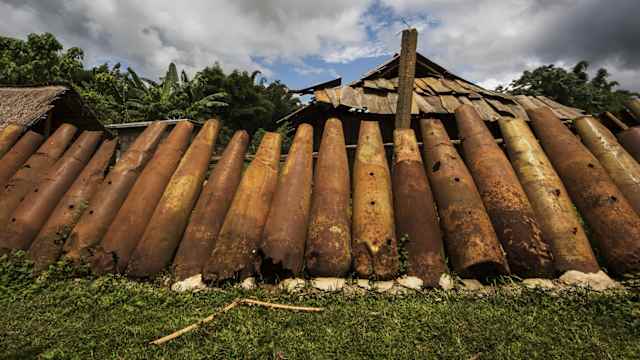The Demilitarized Zone (DMZ) is a region on the Korean peninsula that demarcates North Korea from South Korea. Roughly following the 38th parallel, the 150-mile-long DMZ incorporates territory on both sides of the cease-fire line as it existed at the end of the Korean War (1950–53). The areas north and south of the demarcation are heavily fortified, though skirmishes between the two sides are rare. Located within the territory is the “truce village” of P’anmunjom, but most of the rest of the land has reverted to nature, making it one of the most pristine undeveloped areas in Asia.
The demilitarized zone (DMZ) incorporates territory on both sides of the cease-fire line as it existed at the end of the Korean War (1950–53) and was created by pulling back the respective forces 1.2 miles (2 km) along each side of the line. It runs for about 150 miles (240 km) across the peninsula, from the mouth of the Han River on the west coast to a little south of the North Korean town of Kosong on the east coast. Located within the DMZ is the “truce village” of P’anmunjom, about 5 miles (8 km) east of Kaesong, N.Kor. It was the site of peace discussions during the Korean War and has since been the location of various conferences over issues related to North and South Korea, their allies, and the United Nations.
The areas north and south of the DMZ are heavily fortified, and both sides maintain large contingents of troops there. Over the years there have been occasional incidents and minor skirmishes but no significant conflicts. Once farmland and subsequently a devastated battleground, the DMZ has lain almost untouched since the end of hostilities and has reverted to nature to a large extent, making it one of the most pristine undeveloped areas in Asia. The zone contains many ecosystems including forests, estuaries, and wetlands frequented by migratory birds. It serves as a sanctuary for hundreds of bird species, among them the endangered white-naped and red-crowned cranes, and is home to dozens of fish species and Asiatic black bears, lynxes, and other mammals. In mid-2007 limited freight-train service was resumed across the zone.





